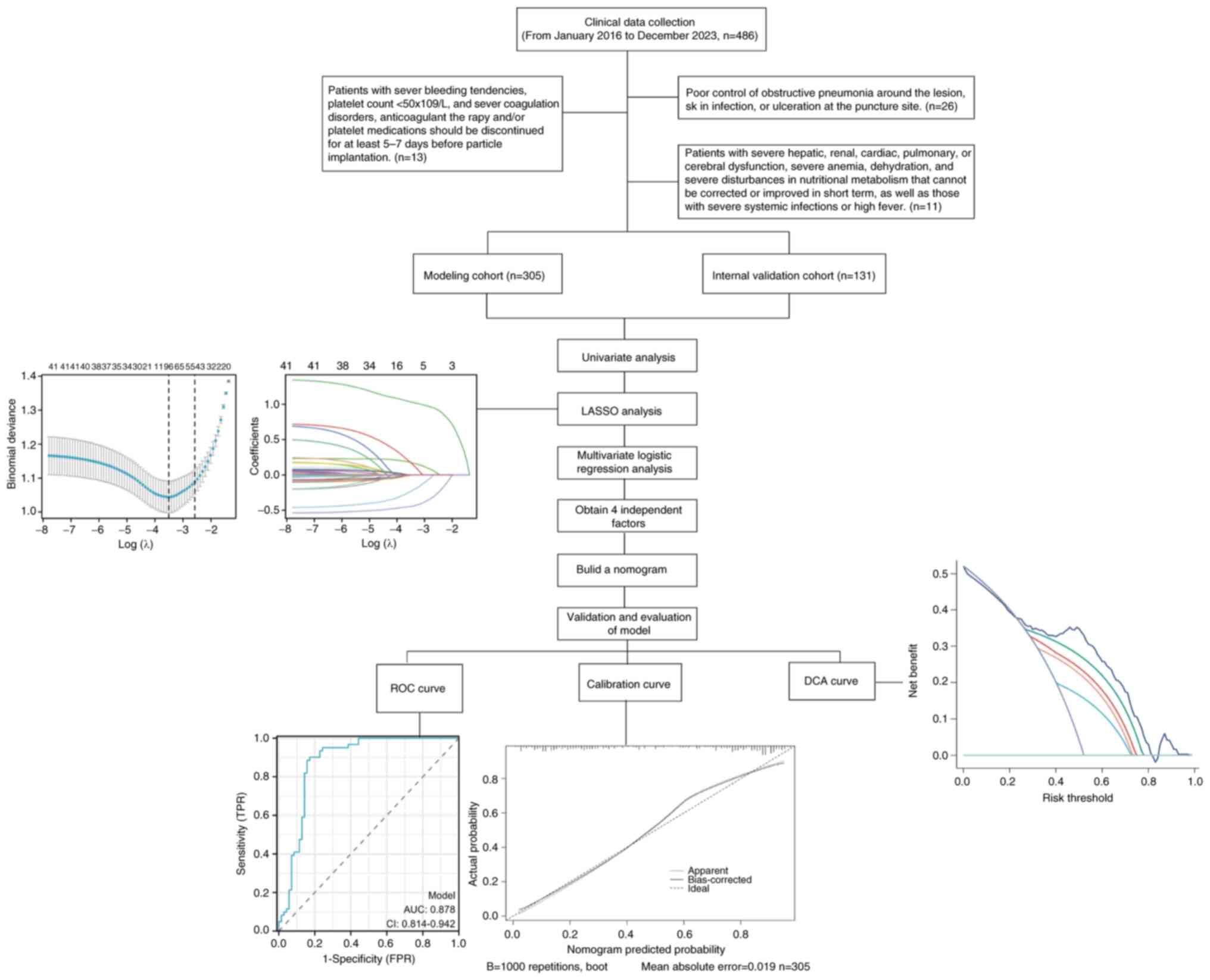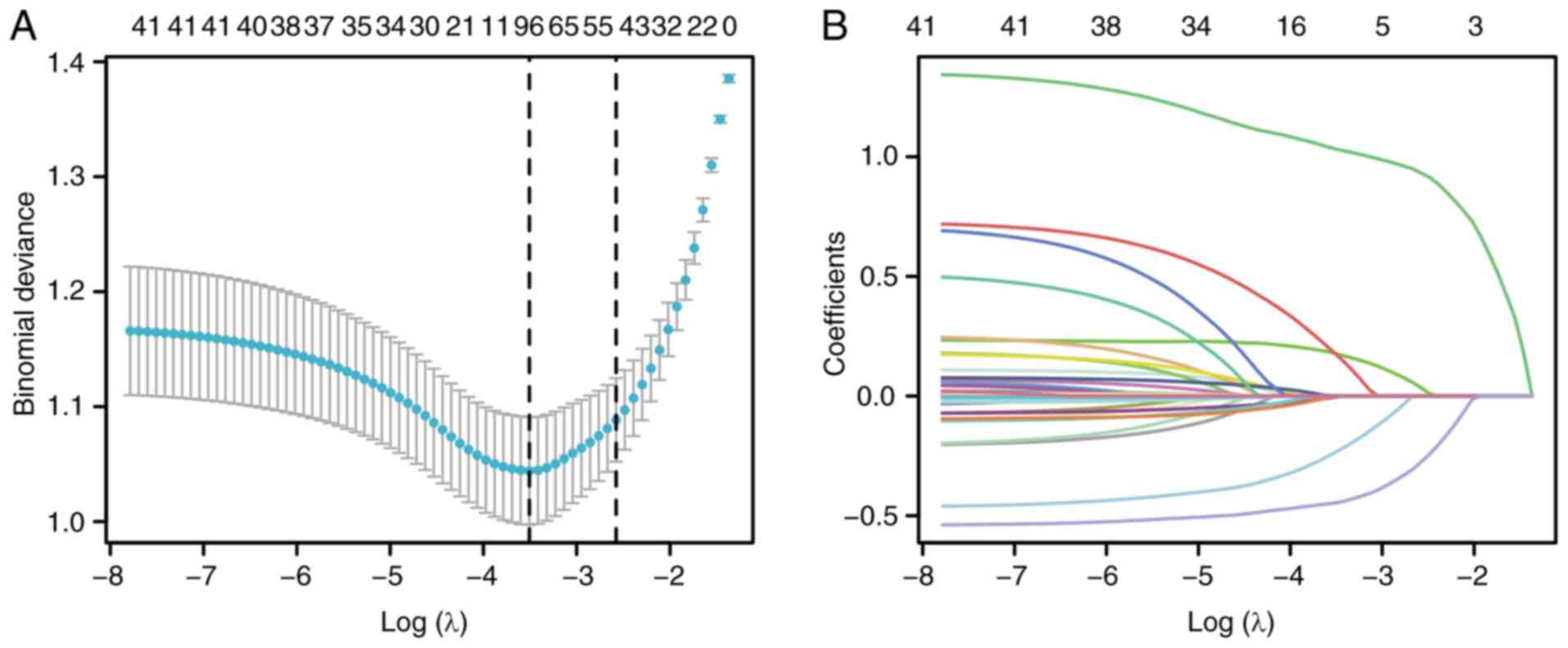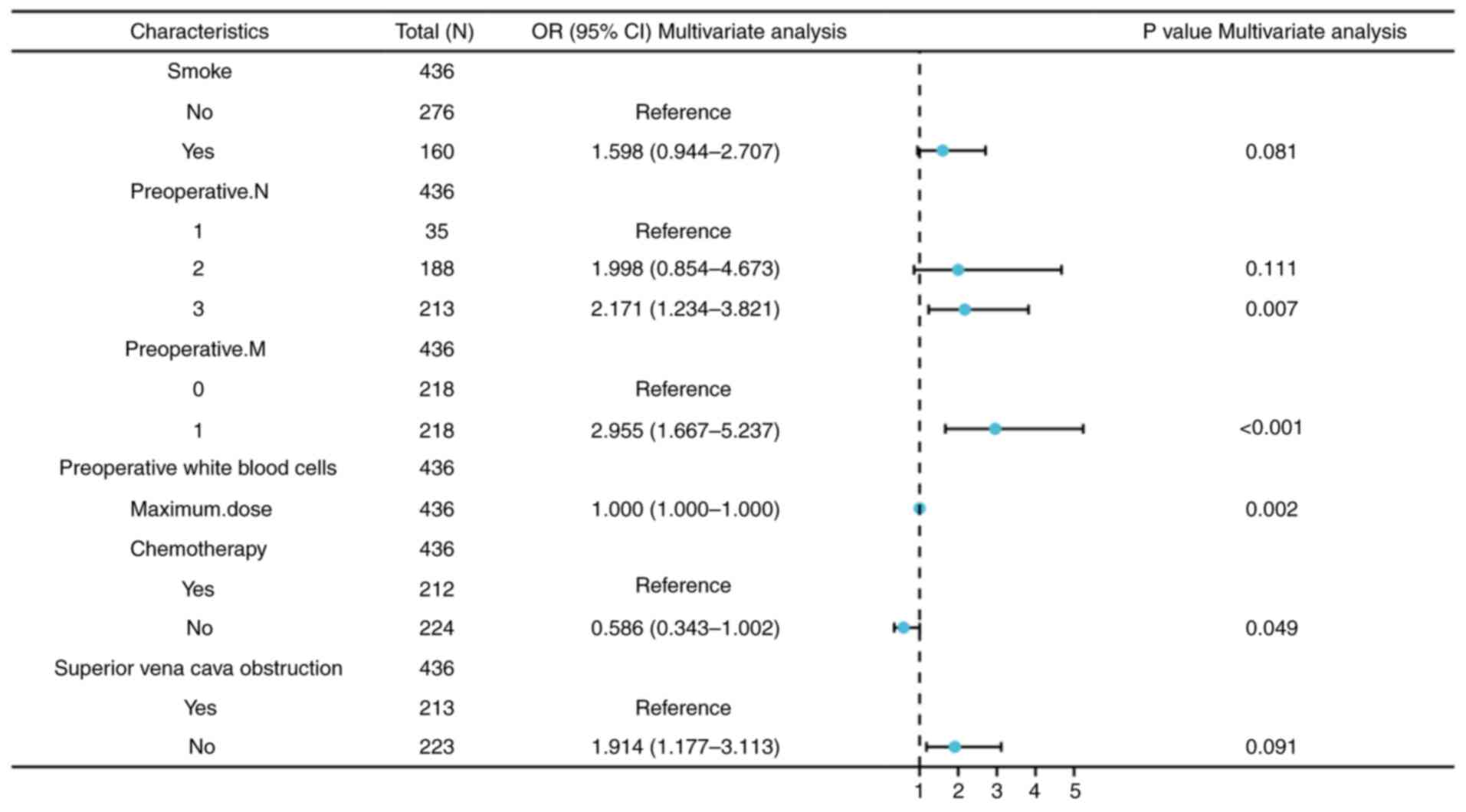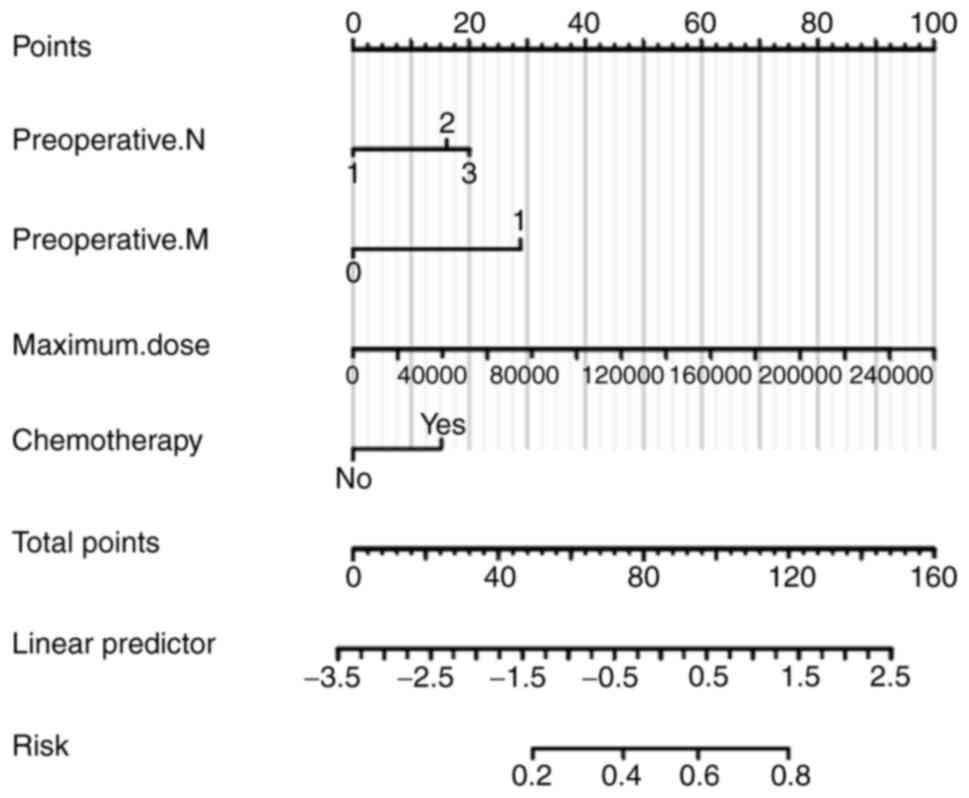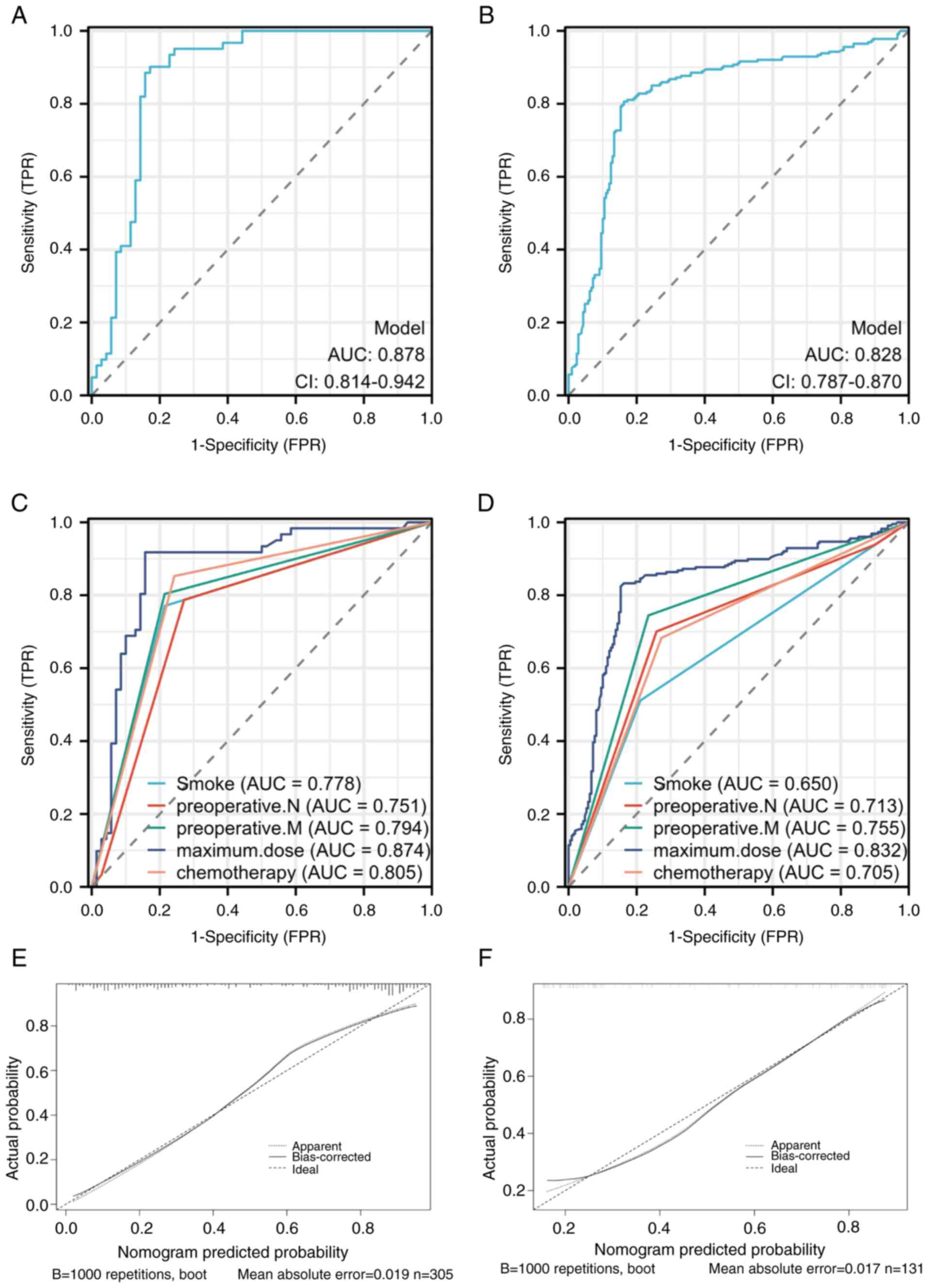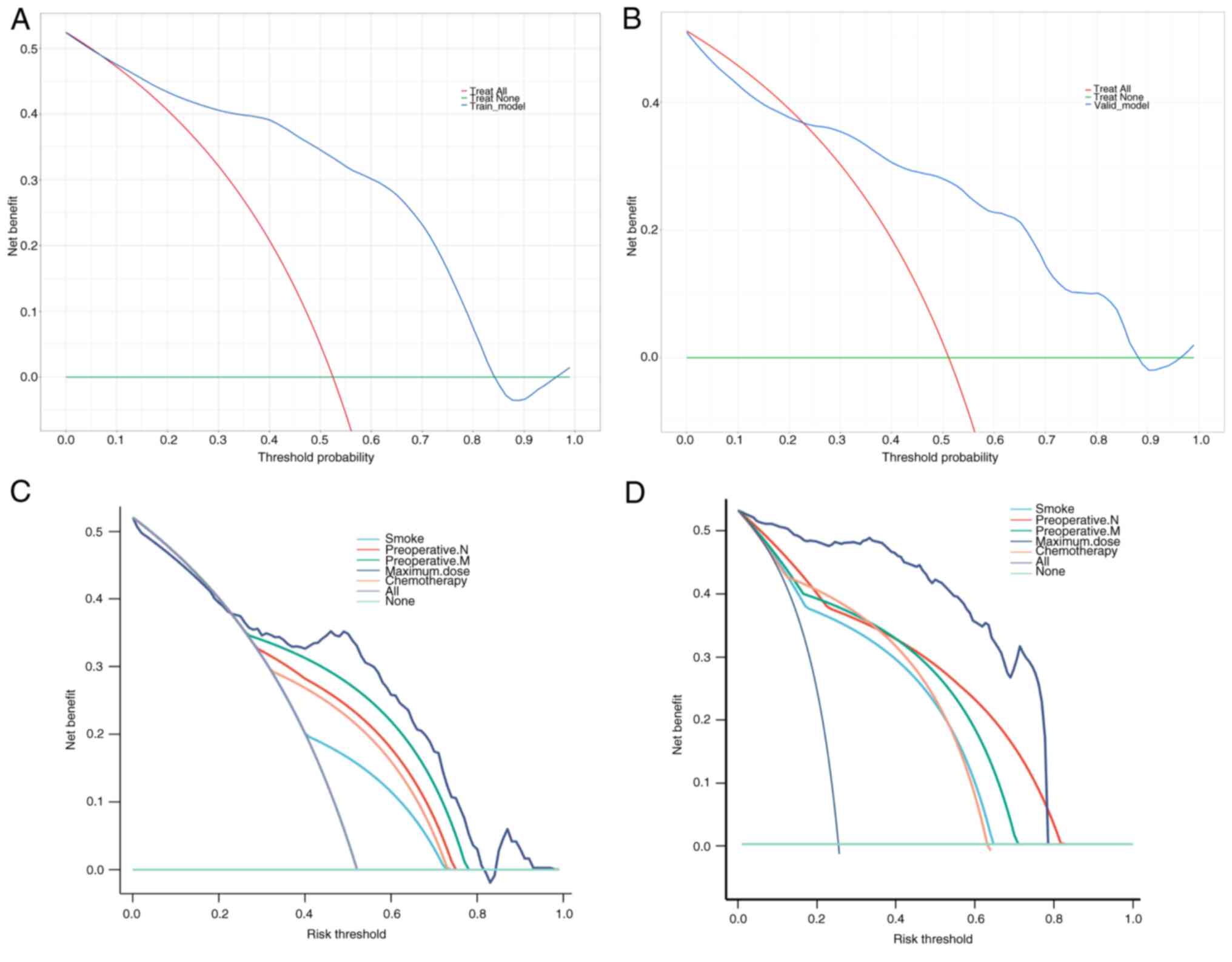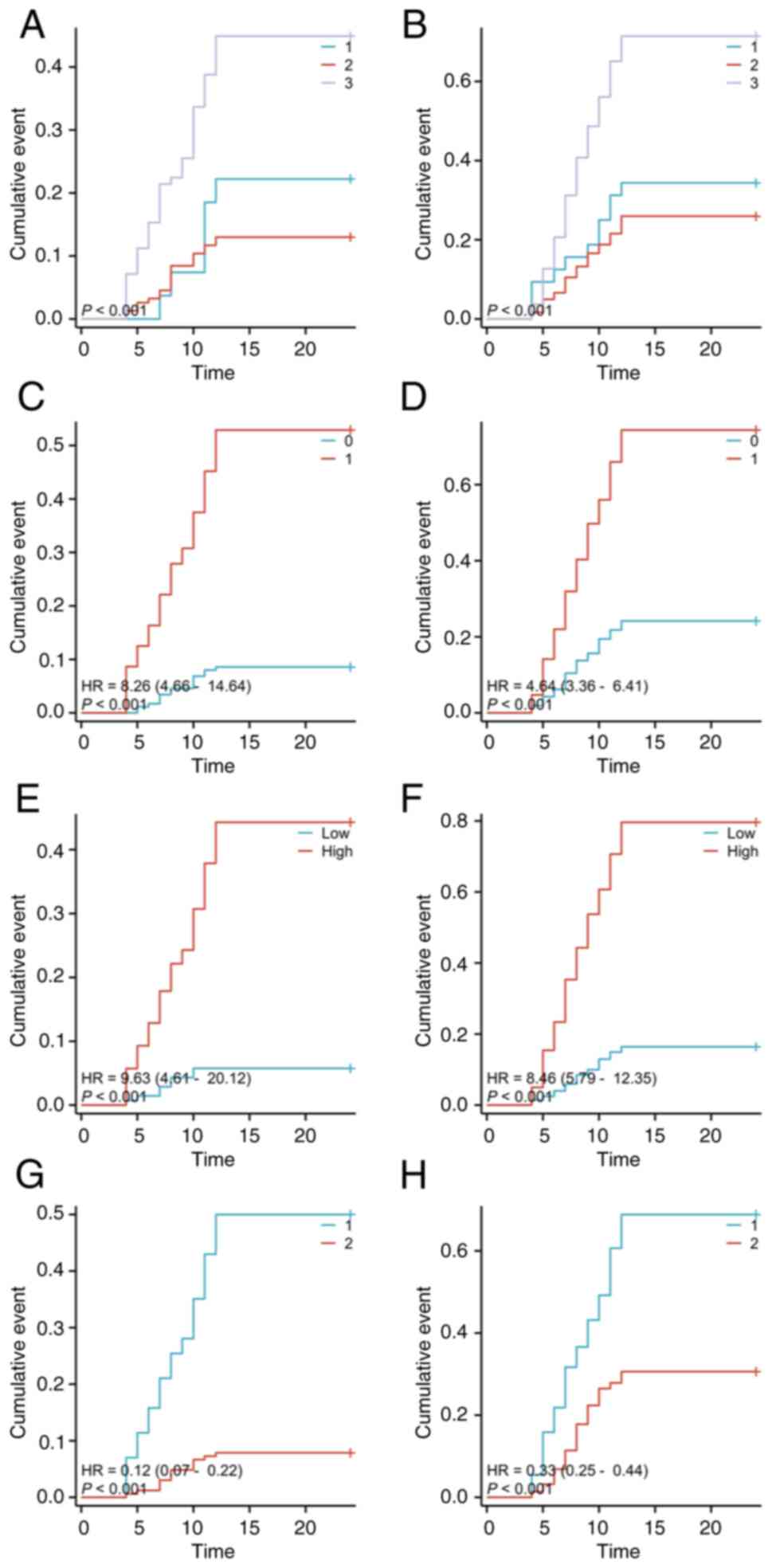|
1
|
Huang M, Lin Q, Wang H, Chen J, Bai M,
Wang L, Zhu K, Jiang Z, Guan S, Li Z, et al: Survival benefit of
chemoembolization plus Iodine125 seed implantation in unresectable
hepatitis B-related hepatocellular carcinoma with PVTT: A
retrospective matched cohort study. Eur Radiol. 26:3428–3436.
2016.PubMed/NCBI View Article : Google Scholar
|
|
2
|
Song J, Fan X, Zhao Z, Chen M, Chen W, Wu
F, Zhang D, Chen L, Tu J and Ji J: 125I brachytherapy of
locally advanced non-small-cell lung cancer after one cycle of
first-line chemotherapy: A comparison with best supportive care.
Onco Targets Ther. 10:1345–1352. 2017.PubMed/NCBI View Article : Google Scholar
|
|
3
|
Yang DY, Lin YP, Xue C, Fan JM, Wang Y,
Cai C, Song DH and Zeng YM: CT-guided percutaneous implantation of
125I particles in treatment of early lung cancer. J
Thorac Dis. 12:5996–6009. 2020.PubMed/NCBI View Article : Google Scholar
|
|
4
|
Wang H, Lu J, Zheng XT, Zha JH, Jing WD,
Wang Y, Zhu GY, Zeng CH, Chen L and Guo JH: Oligorecurrence
non-small cell lung cancer after failure of first-line
chemotherapy: Computed tomography-guided 125I seed
implantation vs second-line chemotherapy. Front Oncol.
10(470)2020.PubMed/NCBI View Article : Google Scholar
|
|
5
|
Ji Z, Jiang Y, Guo F, Peng R, Sun H, Wang
P, Fan J and Wang J: Radiation-related adverse effects of CT-guided
implantation of 125I seeds for thoracic recurrent and/or
metastatic malignancy. Sci Rep. 9(14803)2019.PubMed/NCBI View Article : Google Scholar
|
|
6
|
Wang G, Zhang F, Yang B, Xue J, Peng S,
Zhong Z, Zhang T, Lu M and Gao F: Feasibility and clinical value of
CT-guided (125)I brachytherapy for bilateral lung recurrences from
colorectal carcinoma. Radiology. 278:897–905. 2016.PubMed/NCBI View Article : Google Scholar
|
|
7
|
Su L, Dong Y, Wang Y, Wang Y, Guan B, Lu
Y, Wu J, Wang X, Li D, Meng A and Fan F: Potential role of
senescent macrophages in radiation-induced pulmonary fibrosis. Cell
Death Dis. 12(527)2021.PubMed/NCBI View Article : Google Scholar
|
|
8
|
Cai G, Liang S, Li C, Meng X and Yu J:
Left ventricular systolic dysfunction is a possible independent
risk factor of radiation pneumonitis in locally advanced lung
cancer patients. Front Oncol. 9(1511)2020.PubMed/NCBI View Article : Google Scholar
|
|
9
|
Simeonova AO, Fleckenstein K, Wertz H,
Frauenfeld A, Boda-Heggemann J, Lohr F and Wenz F: Are three doses
of stereotactic ablative radiotherapy (SABR) more effective than 30
doses of conventional radiotherapy? Transl Lung Cancer Res.
1:45–53. 2012.PubMed/NCBI View Article : Google Scholar
|
|
10
|
Zheng RS, Chen R, Han BF, Wang SM, Li L,
Sun KX, Zeng HM, Wei WW and He J: Cancer incidence and mortality in
China, 2022. Zhonghua Zhong Liu Za Zhi. 46:221–231. 2024.PubMed/NCBI View Article : Google Scholar : (In Chinese).
|
|
11
|
Münsterberg J, Loreth D, Brylka L, Werner
S, Karbanova J, Gandrass M, Schneegans S, Besler K, Hamester F,
Robador JR, et al: ALCAM contributes to brain metastasis formation
in non-small-cell lung cancer through interaction with the vascular
endothelium. Neuro Oncol. 22:955–966. 2020.PubMed/NCBI View Article : Google Scholar
|
|
12
|
Wang Y, Zhu L, Lin X, He C, An Z, Tang J,
Lv W and Hu J: Therapeutic effect of CT-guided 125I seed
implantation on advanced lung cancer and pulmonary metastatic
carcinoma. Zhongguo Fei Ai Za Zhi. 23:424–428. 2020.PubMed/NCBI View Article : Google Scholar : (In Chinese).
|
|
13
|
Wang X and Wang D: Clinical analysis of
125I seed implantation combined with epidermal growth factor
receptor-tyrosine kinase inhibitors in advanced non-small cell lung
cancer. J BUON. 26:1879–1886. 2021.PubMed/NCBI
|
|
14
|
Zhang T, Lu M, Peng S, Zhang W, Yang G,
Liu Z, Singh S, Yang Y, Zhang F and Gao F: CT-guided implantation
of radioactive 125I seed in advanced non-small-cell lung cancer
after failure of first-line chemotherapy. J Cancer Res Clin Oncol.
140:1383–1390. 2014.PubMed/NCBI View Article : Google Scholar
|
|
15
|
Cao X, Fang L, Cui CY, Gao S and Wang TW:
DTI and pathological changes in a rabbit model of radiation injury
to the spinal cord after 125I radioactive seed
implantation. Neural Regen Res. 13:528–535. 2018.PubMed/NCBI View Article : Google Scholar
|
|
16
|
Zha Y, Zhang J, Yan X, Yang C, Wen L and
Li M: A dynamic nomogram predicting symptomatic pneumonia in
patients with lung cancer receiving thoracic radiation. BMC Pulm
Med. 24(99)2024.PubMed/NCBI View Article : Google Scholar
|
|
17
|
De Petris L, Lax I, Sirzén F and Friesland
S: Role of gross tumor volume on outcome and of dose parameters on
toxicity of patients undergoing chemoradiotherapy for locally
advanced non-small cell lung cancer. Med Oncol. 22:375–381.
2005.PubMed/NCBI View Article : Google Scholar
|
|
18
|
Yu X, Li J, Zhong X and He J: Combination
of Iodine-125 brachytherapy and chemotherapy for locally recurrent
stage III non-small cell lung cancer after concurrent
chemoradiotherapy. BMC Cancer. 15(656)2015.PubMed/NCBI View Article : Google Scholar
|
|
19
|
Takeda A, Tsurugai Y, Sanuki N, Enomoto T,
Shinkai M, Mizuno T, Aoki Y, Oku Y, Akiba T, Hara Y and Kunieda E:
Clarithromycin mitigates radiation pneumonitis in patients with
lung cancer treated with stereotactic body radiotherapy. J Thorac
Dis. 10:247–261. 2018.PubMed/NCBI View Article : Google Scholar
|
|
20
|
Bi J, Meng R, Yang D, Li Y, Cai J, Zhang
L, Qian J, Xue X, Hu S, Yuan Z, et al: Dosimetric predictors of
radiation pneumonitis in patients with prior immunotherapy
exposure: A multi-institutional analysis. Radiother Oncol.
190(110040)2024.PubMed/NCBI View Article : Google Scholar
|
|
21
|
Ji Z, Ni Y, He C, Huo B, Liu S, Ma Y, Song
Y, Hu M, Zhang K, Wang Z, et al: Clinical outcomes of radioactive
seed brachytherapy and microwave ablation in inoperable stage I
non-small cell lung cancer. Am J Cancer Res. 13:3753–3762.
2023.PubMed/NCBI
|
|
22
|
Flakus MJ, Kent SP, Wallat EM, Wuschner
AE, Tennant E, Yadav P, Burr A, Yu M, Christensen GE, Reinhardt JM,
et al: Metrics of dose to highly ventilated lung are predictive of
radiation-induced pneumonitis in lung cancer patients. Radiother
Oncol. 182(109553)2023.PubMed/NCBI View Article : Google Scholar
|
|
23
|
Huang P and Yi X: Risk factors and a model
for prognosis prediction after intravenous thrombolysis with
alteplase in acute ischemic stroke based on propensity score
matching. Int J Immunopathol Pharmacol.
38(3946320241274231)2024.PubMed/NCBI View Article : Google Scholar
|



